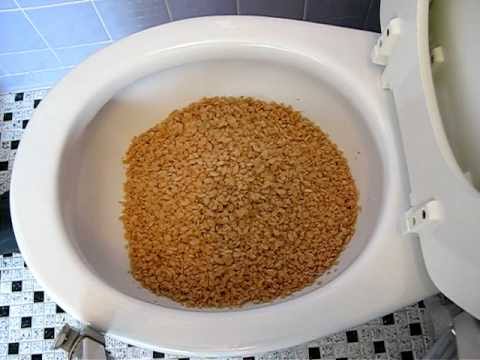Is it Advisable to Flush Food Down the Toilet?
Is it Advisable to Flush Food Down the Toilet?
Blog Article
Everyone seems to have their own unique rationale involving What Can Happen If You Flush Food Down the Toilet?.

Introduction
Lots of people are commonly faced with the problem of what to do with food waste, especially when it comes to leftovers or scraps. One typical inquiry that arises is whether it's alright to flush food down the commode. In this write-up, we'll explore the reasons why individuals might consider flushing food, the consequences of doing so, and different techniques for correct disposal.
Reasons individuals might take into consideration flushing food
Absence of understanding
Some people might not recognize the potential damage brought on by purging food down the commode. They might wrongly believe that it's a safe practice.
Benefit
Flushing food down the commode might look like a fast and simple option to taking care of undesirable scraps, particularly when there's no nearby garbage can available.
Negligence
Sometimes, individuals might just pick to flush food out of large idleness, without taking into consideration the effects of their actions.
Consequences of flushing food down the bathroom
Environmental influence
Food waste that ends up in waterways can contribute to air pollution and injury water ecosystems. Furthermore, the water utilized to purge food can strain water sources.
Pipes issues
Flushing food can lead to blocked pipelines and drains pipes, causing costly pipes repair work and aggravations.
Types of food that must not be flushed
Coarse foods
Foods with fibrous appearances such as celery or corn husks can get entangled in pipelines and trigger clogs.
Starchy foods
Starchy foods like pasta and rice can absorb water and swell, resulting in blockages in pipes.
Oils and fats
Greasy foods like bacon or food preparation oils ought to never be flushed down the commode as they can solidify and cause clogs.
Correct disposal methods for food waste
Using a waste disposal unit
For homes furnished with garbage disposals, food scraps can be ground up and purged with the pipes system. Nevertheless, not all foods are suitable for disposal in this way.
Recycling
Certain food packaging products can be recycled, reducing waste and reducing environmental impact.
Composting
Composting is an environment-friendly means to dispose of food waste. Organic materials can be composted and made use of to enrich soil for horticulture.
The relevance of appropriate waste monitoring
Minimizing ecological harm
Proper waste monitoring practices, such as composting and recycling, help reduce contamination and preserve natural deposits for future generations.
Shielding plumbing systems
By avoiding the method of flushing food down the toilet, property owners can prevent costly plumbing repair services and keep the integrity of their plumbing systems.
Final thought
In conclusion, while it might be appealing to flush food down the bathroom for ease, it is necessary to recognize the prospective repercussions of this activity. By taking on correct waste administration methods and getting rid of food waste responsibly, individuals can contribute to much healthier pipes systems and a cleaner setting for all.
FLUSH FOOD DOWN THE TOILET?
FLUSHING FOOD CAN CAUSE BLOCKED DRAINS IN YOUR HOME
All of the plumbing fixtures in your home are connected to the same sewer pipe outside of your home. This outdoor sewer pipe is responsible for transporting all the wastewater from your home to the Council sewer mains. Even small pieces of food that go down the kitchen sink can cause problems for your sewer. It should therefore be obvious that flushing larger bits of food, such as meat, risks a clog in either the toilet itself or the sewer pipes. Flushing greasy food is even more problematic because oil coagulates when it cools, coating the interior lining of your pipes.
THE TOILET IS NOT A BIN
Food isn’t the only thing that people shouldn’t be flushing down the toilet. People use the toilet to dispose of all kinds of things such as tampons, makeup wipes, dental floss, kitty litter and even underwear. Water goes to great lengths to educate residents about the high costs and stress placed on wastewater treatment systems simply from people flushing the wrong stuff down the toilet. It costs taxpayers millions of dollars each year, and homeowners thousands in blocked drain repairs.
FLUSHING FOOD IS A WASTE OF WATER
Flushing food is a waste of our most precious resource - water. In June this year Level 1 water restrictions were introduced to protect water supply from drought conditions. Much of New South Wales continues to be affected by prolonged drought with recent figures revealing up to 97 per cent of the state remains in drought. Depending on whether you have a single or dual flush toilet, every single flush uses between five and 11 litres of water. In the current climate this is a huge amount of water to be wasting on flushing food that should be placed in the bin (or better yet, the compost).
https://www.jabplumbingsolutions.com.au/blog/can-you-flush-food-down-the-toilet

As a passionate person who reads about Is it safe to flush food (especially rice) down the toilet?, I assumed sharing that blog post was a great idea. You should take the opportunity to promote this page if you appreciated it. Thanks for your time invested reading it.
More Details Report this page